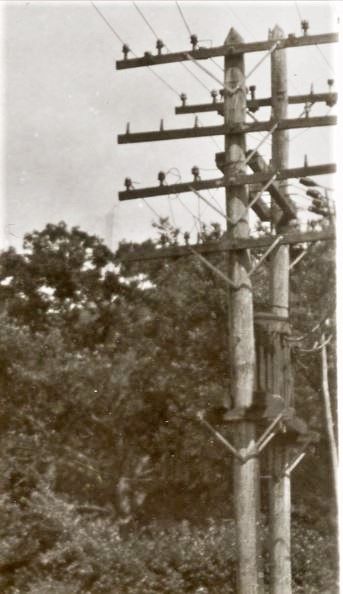Hingham Municipal Lighting Plant, MA, 1913. Three Phase PlatformTransformer Bank
By Joe Maurath, Jr.; posted July 6, 2020
View Original: Click to zoom, then click to magnify (343 x 594) 72KB

|
Single phase primary-voltage circuits were the rule up until 1913 within the forementioned utility's town-owned system. They operated at 1,100 and 2,200 volts. With growing usage and customers continually being added, purchasing electricity from a three phase generation source was recommended by the community's light board. Shown is an early three-phase transformer installation at a Hingham, MA military training ground and camp during that year. In their 1913 annual report the commissioners stated: "New improved equipment at the East Weymouth generation facility (where the town bought their wholesale power from; owned by a private company) was enabling the town's electrical system to be converted to "three phase". This method was more efficient and enabled the town to increase customers with lesser concern about overloading problems. The new transformers connected to this system further reduced line losses. Of interest, an electric cooking rate was introduced at 4 cents per kilowatt hour, compared to 10 cents for the regular rate. This incentive became quite popular and made use of the ample and extra current that was available during the daytime hours when the demand was low. This was accomplished by recording the range's kilowatt hour usage via a separately connected meter. A monthly adjusted bill from the generation facility to the Light Plant with the monthly savings was directly passed onto the consumer. |